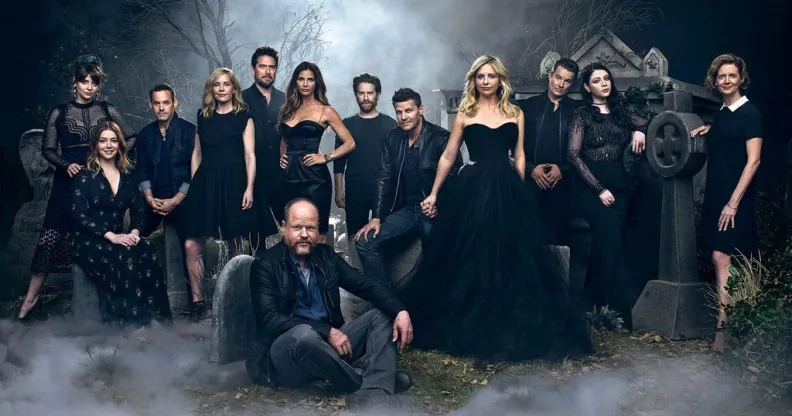Buffy the Vampire Slayer creator says this core member of the Scooby Gang would be bisexual if the show was made today

Makers have hinted that the show could be revived. (Creative Commons)
Makers have hinted that the show could be revived. (Creative Commons)
It was a simpler time when Buffy the Vampire Slayer was airing on boxy television screens, but decades on since the Joss Whedon’s show’s launch, and the creator has admitted he’d make a few changes if it dropped today.
Willow (Alyson Hannigan), the Scooby Gang’s spell-caster, came out as lesbian in season four.
It sparked both admiration for the show paving the way for LGBT+ representation in the early 2000s, but also outrage from fans vowing to never tune in again – how it was incomprehensible that a witch whose best pal is a vampire slayer and whose ex was a werewolf could be lesbian.
Yet, what chaffed some modern-day fans is how Willow appeared to show an attraction to males in the first three seasons of the show.
Joss Whedon: 2000 Buffy the Vampire Slayer viewers were ‘not ready’ for Willow to be bisexual.
The American producer explained to Metro.co.uk that he would, if the show were made today, have Willow identify as bisexual, rather than gay.
He admitted biphobic attitudes and stereotypes limited him, weary that audiences may reduce Willow’s queerness as a “phase”.
“There are things you can’t do, thanks to [the society at the time],” the director said.
“It [was] like: ‘OK, you can’t make Willow bi, you can’t say this is a phase, because that’s what people do to deny their existence.”
“So, if I did it now, I’d be like yes she can be bi. Because some people are!
“But back then it was like, no… we’re not ready for that.”
Biphobia is still all too common in TV shows.
Even today, television and movie characters who are bi+ are often snarled by toxic tropes – biphobia often reduces bi+ identities to nothing more than a one-episode arc, a throwaway joke or even regularly end up killed altogether.
Scripts may even skate around the word itself, “bisexual”, which is why, for example, Stephanie Beatriz, the queer actress who plays Diaz on Brooklyn 99, felt it was so important for Diaz to say the word itself when she came out as bisexual.
Indeed, representation is becoming more authentic as bi+ characters are beginning to flourish on today’s TV and laptop screens.
Recent years have seen a steady increase in bi+ representation which are all busting the myths about bisexuality that have long limited the community’s visibility.

